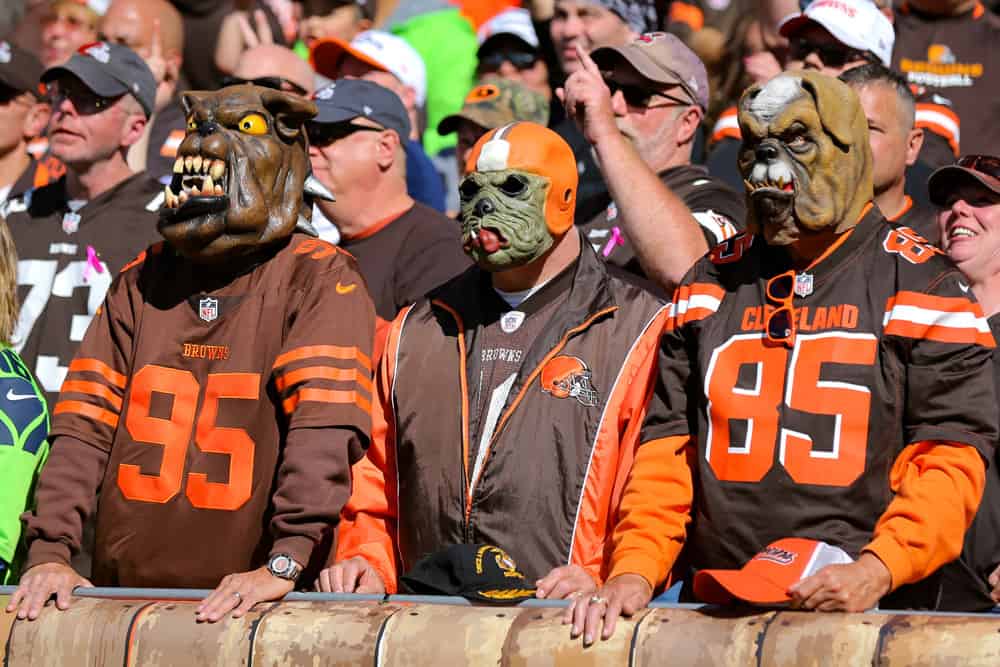
- Storylines Heading Into Cleveland Browns Training Camp - July 19, 2024
- June MLB Power Rankings - July 3, 2024
- May MLB Power Rankings - June 4, 2024
One of the greatest things about sports, even sometimes more than the actual play, is the traditions behind each team. From the practical and memorable to the just plain bizarre, there are several quirks that make teams and fan bases renowned throughout the world.
Last time, we just scratched the surface, so today we’re diving back back and looking at a few more strange traditions that you may or may not know!
Kissing The Bricks
Indianapolis Motor Speedway is known for two things: the racing spectacle that is the Indy 500 and it’s famed “Yard of Bricks” that represents the starts/finish line. It’s become tradition to kiss the bricks after a win. However, it wasn’t an Indy Car driver that started it, it was a NASCAR driver.
In 1996, Dale Jarrett won the Brickyard 400 at Indianapolis Motor Speedway. After the race, he and his pit crew chief, Todd Parrott, turned their hats around, kneeled down and kissed the bricks.
It hadn’t been done before but ever since, any driver that’s won NASCAR’s Brickyard 400 or Indy Car’s Indy 500 has kissed the breaks after every win.
Botafogo FC’s Dog
We’ve always heard if a bird poops on you, that it’s good luck. However, in Brazil, if a dog pees on you, then your soccer team wins the league championship?
This is a thing. Seriously.
In 1948, a stray dog, later named Biriba, ran onto the field during a match between Botafogo and Bonsucesso. The president of the team, Carlito Rocha, ordered the dog would attend the rest of the games that season.
Events later in the season would cement Biriba in Brazil’s soccer history.
During a warm up before a match, Biriba walked over to a player and urinated on one of the players’ shoes. Botafogo would go onto win that game and clinch the state championship for Rio De Janeiro. From then on, the team would find a stray dog and let them lift a leg on one of their players.
Return To Center
It’s been widely adopted through Major League Baseball to throw a home run ball by the visiting team back onto the field of play. However, the tradition really started in Chicago, where nearly every home run ball by an opposing player is thrown back.
Like many good things, it started with a bartender.
During a game in 1970, the Chicago Cubs were hosting the Atlanta Braves when outfielder Hank Aaron hit a home run. The Cubs fan that caught it was a bartender from Chicago who held a grudge against Aaron.
The year prior, he had a caught another home run ball from him, and tried to give Aaron the ball back. However, Aaron would walk away and the fan felt snubbed. So when the fan caught the ball this time, he threw it back onto the field and a tradition was born.
According to stories, Aaron wasn’t trying to snub the man. Rather, Cubs fans were throwing beer at him that game, so he was trying to get off the field quickly. In any case, the misunderstanding has lead to a Wrigley Field tradition and something that’s been done by fans of all teams around baseball.
This Is The Dawg Pound
If you’ve ever been to Cleveland, one of the first things you’ll notice outside of FirstEnergy Stadium is a dog house with their real life mascot, Swagger Jr., resting inside and ready for pictures. As you walk through the stadium you’ll notice fans wearing bone necklaces, collars and dog masks.
Finally as soon as the game starts, the famous “This Is The Dawg Pound” banner is unveiled in the east end zone, other wise known as the “Dawg Pound.” It leads to the question, “if they’re the Cleveland Browns, why all the dog references?”
The tradition started in 1985 when cornerback Hanford Dixon called his defensive teammates “Dawgs.” “We had the idea of the quarterback being the cat, and the defensive line being the dog,” Dixon said. “Whenever the defense would get a regular sack or a coverage sack the defensive linemen and linebackers would bark.”
Dixon and his teammate, fellow cornerback Frank Minnifield, would proceed to put up a banner in front of the bleachers that would read, “Dawg Pound” and those bleachers were where the cheapest seats and loudest fans in the stadium were. From there, the fans would build an identity that followed them until their eventual move in 1995.
When the Cleveland Browns returned in 1999, not only would the fans revive the identity, the team took notice. They would trademark a logo and it would be featured on select merchandise. It’s the only logo developed by the NFL for a league fan base.




